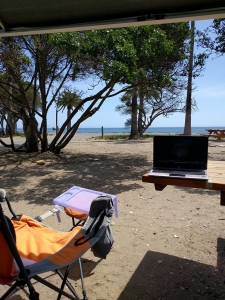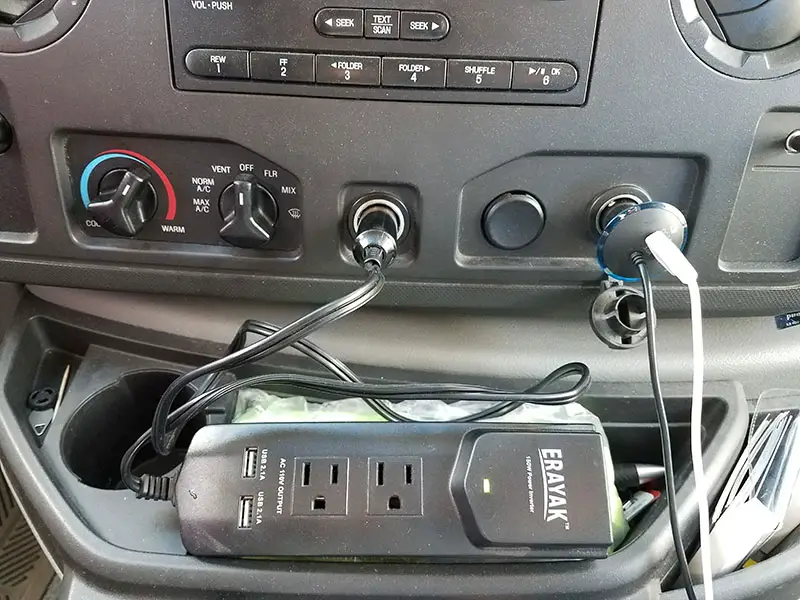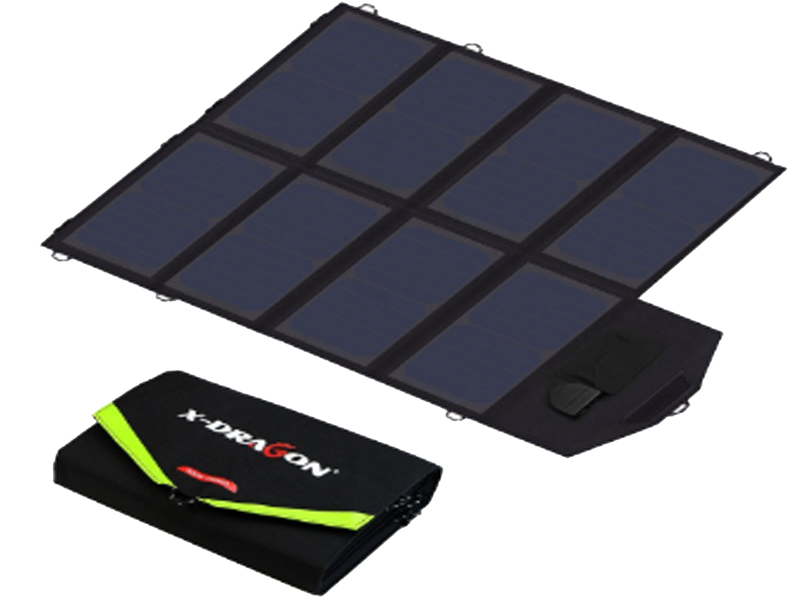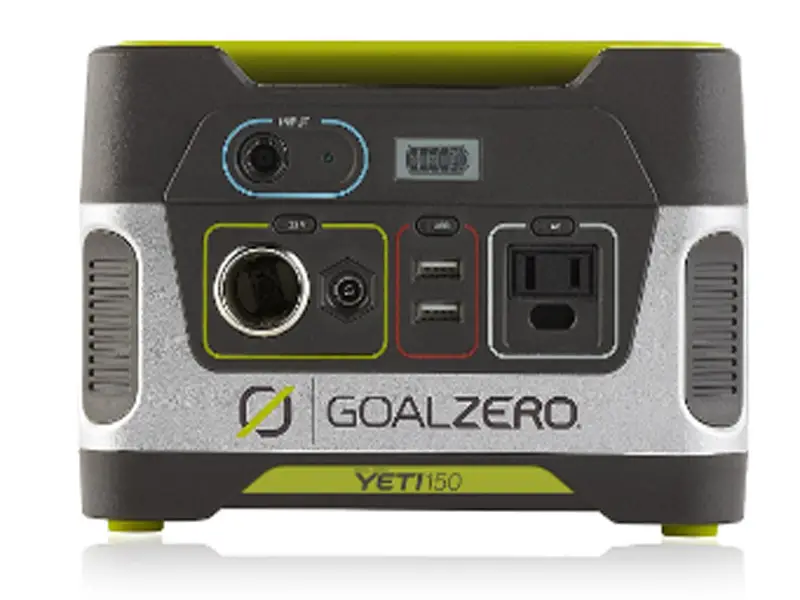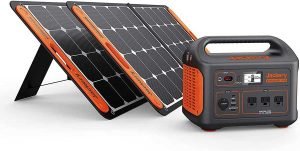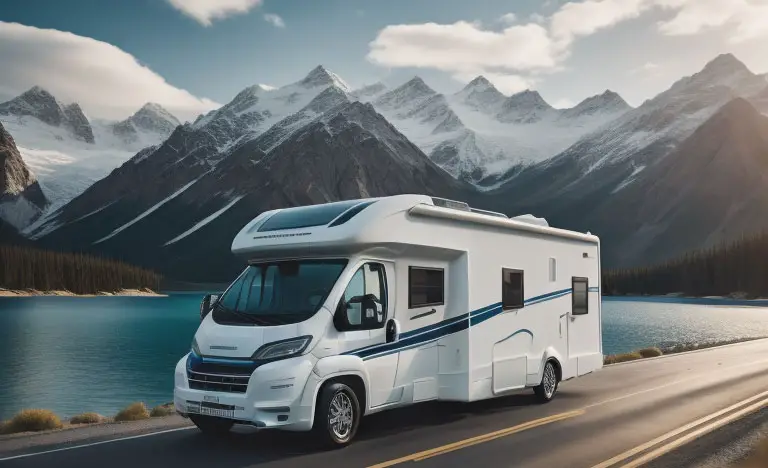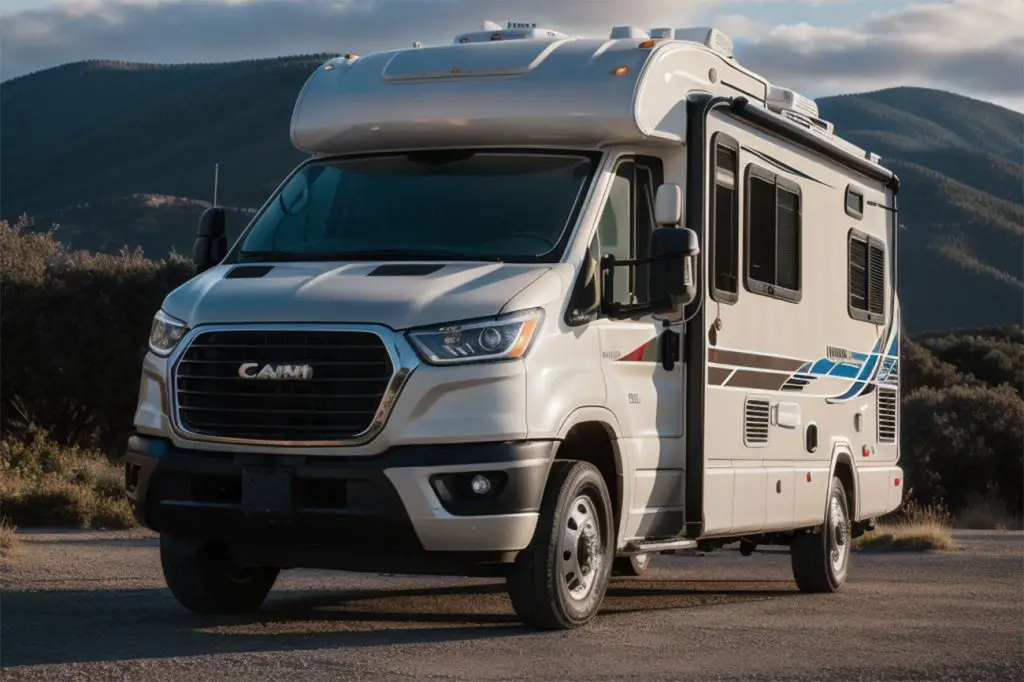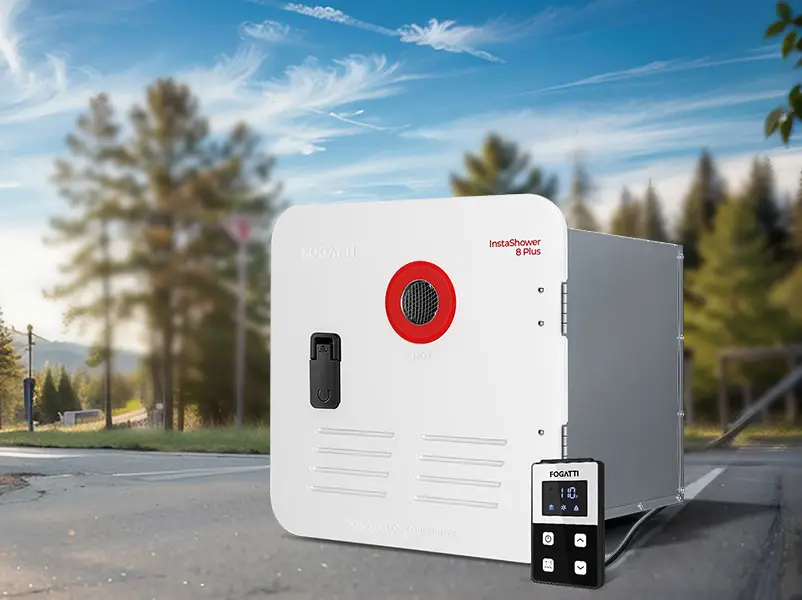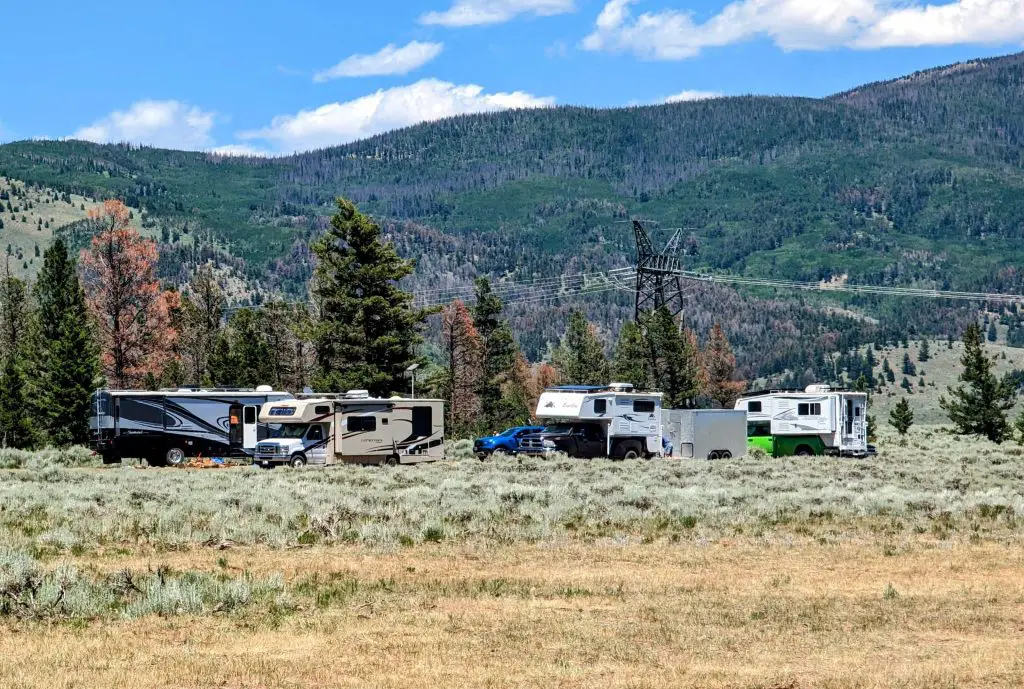Last Updated on March 6, 2024
Key Takeaways:
- Power Inverter: A power inverter connected to your RV’s battery can provide a reliable source of power for small devices like phones and laptops. Opt for a 300W inverter like the Bestek 300W Inverter for efficient charging.
- Universal Laptop Charger: Investing in a universal laptop charger with multiple connectors allows you to charge different laptop brands/models and other USB-charged devices. Consider options like the Universal Laptop Car Charger for versatility.
- Car Power Inverter: If you need to use your car’s battery to charge devices, a car power inverter is a compact and cost-efficient solution. The BESTEK 150W Car Power Inverter is a reliable option for supplying power to small devices.
- Solar Laptop/Device Charger: Portable solar panels have become more efficient and affordable, offering a sustainable way to charge devices while boondocking. Look for models like the X-DRAGON Solar Charger 40W for reliable performance.
- Solar Power Generator: Solar power generators store energy from sunlight and can recharge small electrical devices. Models like the Goal Zero 22004 Yeti 150 or the Jackery Solar Station offer portable and powerful solutions for boondocking.
- Pedal Generator: For a unique charging option, consider a pedal generator, which allows you to charge devices while getting a workout. While not as efficient as other methods, it can be a fun and emergency charging option for phones and tablets.
Boondocking is fun and it is FREE! When you find yourself dry camping (no electric source) with your RV, the question remains: how to keep devices charged up?
Let’s see, you can have a complete solar set up on your roof with a high-quality inverter and lithium power banks… However, this is an expensive option. A good solar system will set you back with thousands of dollars, plus you have to learn about solar power and how it works with your RV’s electrical system. Not a task for everyone.
Or you can just run your generator and have power throughout the rig. No problem. Except that, this is a bit too loud for my taste. And I do not like running my generator because it requires gas. And I need to mess with the exhaust. Just annoying all around. And if it stops running, I need to deal with that. Running the gen-set just to charge devices is too wasteful too. No thanks.
Don’t worry! You’re not out of luck when boondocking with no electric source. I’ve got some good news for you: there are better, easier and cheaper options than those listed above.
My options here below are cheaper options that you can use while you are saving money for your complete solar setup or if you are just a weekend-camper.
A Note On Conventional Generators
For the sake of this article, we’re going to look at alternatives to running a portable or built-in generator. Sure they’ll power up your phones and laptops easily, but they’re also loud, smelly, and simply not cost-effective ways to charge small devices. Instead, the focus needs to be upon efficiency, using either the RV or nature as the core power source.
Pick Up A Power Inverter
Some RVs will have one of these built into them, but in the case of living out of a more common model, a power inverter can be an absolute godsend. All you need to do is connect it to a battery source – in this case, the RVs. Of course, it will be better if you have a good set of batteries in your rig. A typical power inverter that will charge your devices should be around 300W.
A good example would be the Bestek 300W Inverter. This multipurpose power inverter can be plugged into any 12 Volt DC battery or connected directly to the batteries with wires. This will provide an excellent source of power capable of running even for most small household appliances. Laptops, cellphones no problem. While it won’t power hairdryers, coffee makers, toasters, or anything that needs to generate heat, but it will fit the bill for most small things you need while camping.
This particular inverter has 300W. You can choose from a pure sine or modified sine, which is important depending on what you are planning on charging with the inverter. Pure sine wave offers better efficiency, but it’s also more expensive than modified versions. I’ve used this with my RV and plugged in the 12V plug that my RV came with. My newer RV however does not have a cigarette lighter plug in the home area so I needed to wire it directly to the batteries.
It’ll charge up electronic devices just like they would if connected to a home socket. We’re using this model as an example because it’s a very dependable performer and well suited to RV dry camping. Just make sure you will charge up your house batteries if they are too low.
As mentioned earlier, this is enough for most small devices, but you can always explore other options if you think this is not enough for your needs.
Universal Laptop Charger
While many phones come complete with phone/car chargers, this is not the case for laptops. Given that if you boondock and you work on your computer you will need to charge your laptop relatively frequently, it makes sense to pick up a universal charging cord that ought to last a lifetime. Plus it’ll be capable of charging different laptops too in case you or your travel partner using a different brand/model. These are relatively inexpensive and available online and in a local department store.
A solid universal charger will come complete with a comprehensive selection of connectors that will match the vast majority of laptops, as well as offering dual USB connectivity. When combined with a laptop inverter, this is an ideal solution for charging laptops in an RV without being connected to shore power.
Apple users should be aware that not many universals include the parts for that line of products so check before purchasing! A solid example of a reliable universal charging kit would be This Universal Laptop Car Charger. This handy kit matches all the above specifications and can be picked up pretty cheaply. Aside from the laptop connectors, the kit also includes USB and mini-USB connectors which you can use to charge up your cell phones, Fitbit, etc.
Here are more universal laptop chargers with 12V plug.
When choosing a universal charger, always remember to look at the amps. For these little devices, the minimum should be 2 amps. However, it is better to have a higher amp rating that can charge different brands and models of laptops as well as other USB-charged devices.
Car Power Inverter
If you really need to use your car’s battery and need a solid amount of power, then this is a reliable way to go. Rather than a stand-alone inverter as described above which connects to your deep cycle battery, these can connect right to your car battery via the cigarette lighter and can easily recharge and power any small device. The advantages are that they are compact, light, and offer excellent value for money.
You’d be surprised how cost-efficient these can be – usually less than $20 will get you a dual-socket adapter complete with two USB sockets, safety fans, and built-in circuit breakers. Check out the BESTEK 150W Car Power Inverter if you reckon this will fit the bill; it’s a reliable and highly functional solution for supplying multiple sources of power to all your devices.
Make sure you will only use it for small devices. High voltage devices like a blow dryer, heater, or similar will really hurt your car battery. You should be aware of the electric need of your small device before you plug it into your car’s battery.
I would also not recommend this for laptop charging. Instead, get the direct laptop charger (above). This will have to convert your power multiple times to charge your laptop. First to 110V then your laptop charger will convert it to something different. If you use the direct laptop charger, then the 12V will be converted to your laptop’s electric needs.
Solar Laptop / Device Charger
There’s nothing more eco-friendly than harvesting solar energy, and this kind of tech has come a long way in recent years. Small portable solar panels are available now that literally fold over into a hip-flask-sized pouch. Lightweight and capable of delivering a steady and reliable charge, look for models that offer 25% or greater solar efficiency. The majority only deliver just over half that, and the difference in performance is really very noticeable indeed.
The minimum wattage that I would recommend aiming for is at least 15W. This kind of power will deliver enough juice to recharge a smartphone or other small device in around 2 hours (depending on the sun). If you plan to run laptops via solar, then aim for something like 45-60 watts; this will be able to recharge your laptop in several hours, but not as quickly as a car inverter would.
On the subject of power, it’s also worth noting that the more watts you have the better. 15W will deliver around 3 amps at 5 volts which isn’t bad for a tiny portable solar charger. However, 30W models are available with up to 4A current delivery so you’ll be able to charge devices faster.
Of course, price is also a factor so beware of cheap solar chargers. A good model will provide several watts of power for around $100-$150 whereas the cheaper models can struggle above 10W and cost as little as $30-$40. Solar charging your devices or powering your laptop doesn’t have to be expensive, but it is worth your time reading up on some reviews before spending money.
A solid example of a portable solar laptop charger would be the X-DRAGON Solar Charger 40W. Highly efficient portable, robust enough for regular outdoor use, and complete with multiple charging cables and USB connectors, this is a very impressive way of reaping in free energy. It would be an excellent solution if you’re intending on staying in the same spot for a while and don’t intend on running down your RV battery.
Solar Power Generator
Just like the above, these have made huge improvements recently and now offer impressive power storage as well as output. They’re ideal for RV use as not only can they recharge via sunlight, but also via other battery/power sources when on the move or near a conventional source of electricity. Reliable models should offer plenty enough power to recharge and run all small electrical devices.
You should always aim for the biggest wattage you can get your hands on; this will give you an idea of how much power it has stored and how powerful its output is. Don’t let yourself be fooled by marketing fluff, read reviews and then find out what wattage it’s packing before parting with any money.
Think of generators like buying a larger car battery. You want more power so you don’t run out of juice on the road and have to rely on someone else’s electricity. This is why it’s recommended for people thinking about boondocking.
Generators are all generally very similar, however, I recommend the Goal Zero 22004 Yeti 150 which is a smaller system, or the Jackery Solar Station way more powerful. These two will give you an idea of what to look for with solar power generators. Not only is it great as a standalone generator, but it also serves as a portable battery pack that recharges fast and holds plenty of capacity. Additionally, these also include a standard plug point, alongside dual USB connectivity as well. So to charge up this one you need Solar power or you can charge it up before your camping trip using normal AC outlets.
It’s also worth noting that the higher-wattage models of solar power generators are generally better, but more expensive. I would recommend looking at around 1500-2000W if you want something powerful enough to charge up your laptop or provide plenty of energy for other devices.
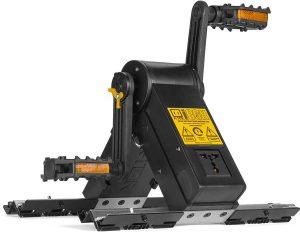 Pedal Generator
Pedal Generator
If you think it is great to get cardio while you are charging the devices you need to try this pedal generator. You can fold it and pack it and only use it as an emergency charging option. This would be better used for phones and tablets, for a laptop, you would need to pedal for 6 hours. Some people love it some say it doesn’t work. I myself never tried it but it seems like a good idea.
So we’ve seen here that it doesn’t take a huge amount of effort, imagination, or money to ensure that your RV-based dry camping need never run out of juice for your laptops and electronics. Each has its own advantages depending upon where and how long you intend to be out camping. Either way, all of the tools listed above are proven tried, and tested in the field and among the best available on the market.


